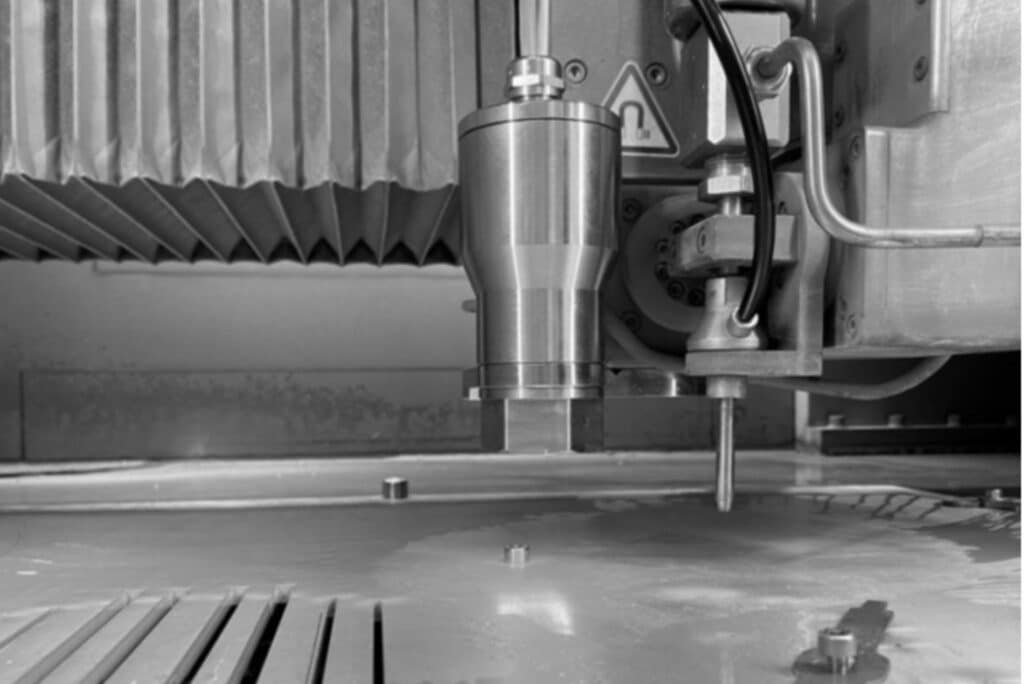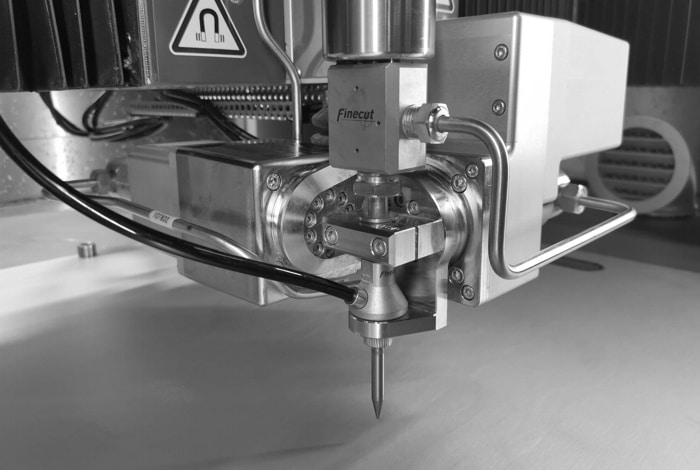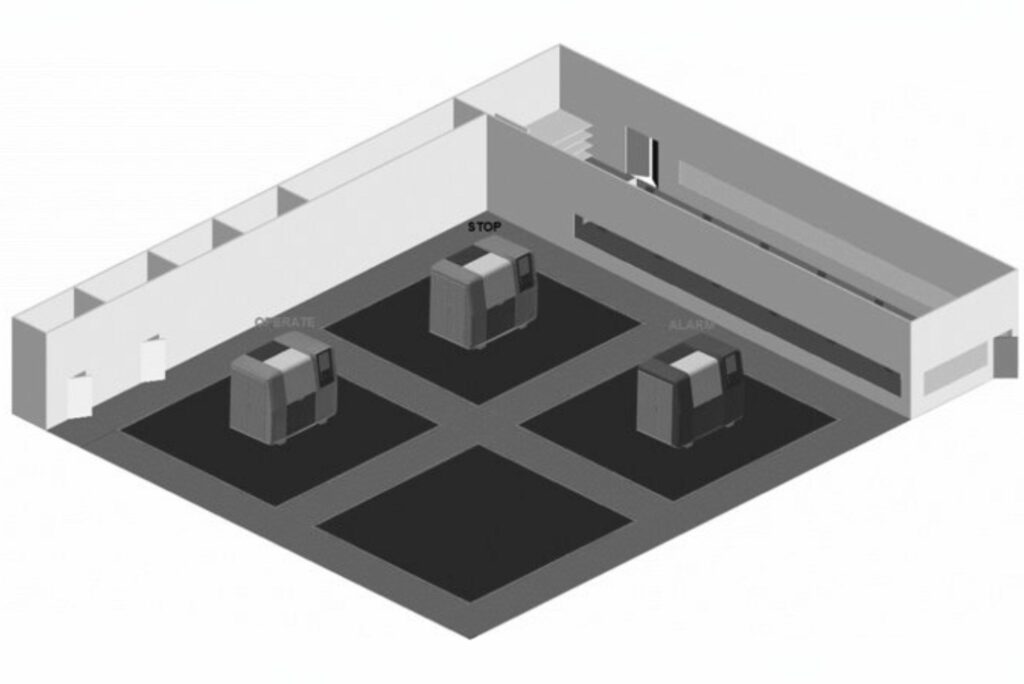
Options
Abrasive Removal Systems & Chillers
The optional abrasive removal systems helps ensure uninterrupted precision cutting, labor efficiency, and productivity. Combined with the Finepart abrasive feeder system you can optimize machine and labor utilization significantly.
OPTION NO. 6002650
MicroCut Abrasive Removal System
Capacity: 125 liter bigbag filter (ca 300 kg abrasive).
Compact size mobile abrasive extraction system. When not used it can be moved and put to side. The compact build enables passage through standard doors.
The two options:
- Manual operation: Use an extraction lance. The lance has a circulating flow that stir up abrasive to facilitate the removal.
- Continuous operation (optional): Can be connected to a sweeper package integrated in the Finecut machine’s catcher tank to continuously remove abrasive during operation.
The abrasive removal unit use two membrane pumps to circulate the water.
Finepart is currently developing a 500 liter bigbag (ca 1000 kg capacity)

Benefits of efficient abrasives removal
Increased machine utilization
Removal for multi-machine operation
Control water temperature in cacher tank
Eliminate lost production time caused by abrasives removal
OPTION NO. 6002600
High-capacity abrasive removal
Capacity: 1000 kg bigbag filter.
For large nozzle sizes follows a higher abrasive consumption and occasionally emptying the catcher tank will become a frequent task.
The abrasive removal unit use two membrane pumps to circulate the water.
This system uses a big-bag filter system. It has a high flow circulation and is therefore more suitable for intermittent usage: a tank cleaning cycle that is performed periodically. The big-bag has a capacity of ca 500 kg spent abrasive.

OPTION NO. 6002610
Multi machine high-capacity abrasive removal
MBM (CE) High-capacity automated abrasive extraction system with chiller.
Foot print: 2.4 m x 1.3 m; Height: 2.8 m (with integrated cooling)
This type of abrasive filter system has the capacity to serve multiple Finecut waterjet machines.
A sweeper package is installed in the cutting tank. Rugged membrane pumps are pumping the abrasive sludge into the filter Big Bag. The filtered water drops into a collecting tank and is cooled by a chiller and pumped back to the catcher tank.
- PLC control monitors the extraction process.
- Special BigBags are used to ensure a reliable filtration.
- BigBag removal is made by truck or crane.

OPTION NO. 6002300
Abrasive removal system
EBBCO (US) High-capacity automated abrasive extraction system with water recycling and chiller.
This abrasive removal system from Ebbco Inc. will continuously remove used abrasive from the catcher tank and eliminate down-time related to abrasive removal.
After filtering, the water will pass through a chiller and then be transported back to the catch tank. The chiller will keep temperature down in the catcher tank, which is of advantage when running long hours or when using larger cutting system nozzles. The product is custom made for the Finecut waterjet machines.
The system is designed for usage in an air-conditioned environment.

OPTION NO. 6005300
Integrated chiller
The integrated chiller keeps the water temperature in the catcher tank at a stable level.
Depending on what jet power and level of jet utilization that is used, heat may accumulate in the catcher tank leading to elevated water temperatures.
Cooling coils inside the catcher tank, out of reach for the cutting jet removes excess heat and maintains a constant temperature in the water. The cooling coils are connected to a separate chiller alongside the Finecut machine.

OPTION NO. 6005200
External chiller
EBBCO (US) High-capacity automated abrasive extraction system with water recycling and chiller.
The external chiller keeps the water temperature in the catcher tank at a stable level. Depending on what jet power and level of jet utilization that is used, heat may accumulate in the catcher tank leading to elevated water temperatures. The chiller removes excess heat and maintains a constant temperature.
The external chiller pumps water from the catcher tank to an external chiller tank fitted with cooling coils connected to a chiller. This solution may be wherever cooling coils cannot be used inside the catcher tank, for example when a dry-catcher is applied.




